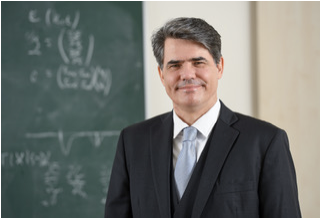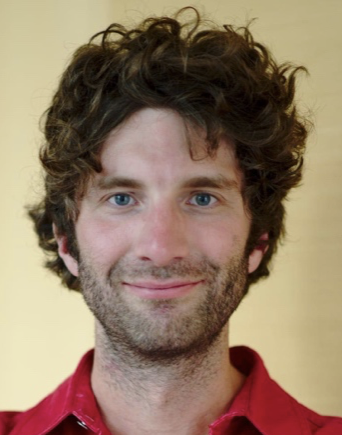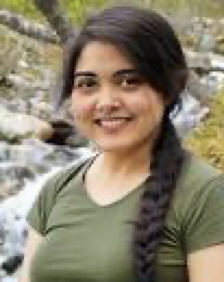Program
Tuesday 21st November 2023 (Auditorium 3, Department of Chemistry, UiO) |
||
| Chair | Thomas Bondo Pedersen | |
| 14:15 | Sigbjørn Løland Bore | Realistic phase diagram of water from first principles |
| 14:45 | Torsha Moitra | Relativistic framework for understanding ultrafast pump-probe processes |
| 15:15 | Frank Neese | A perspective on large scale quantum chemical codes and algorithms |
Thursday 23rd November 2023 (Teknologibygget: Auditorium, 1.023, UiT) |
||
| Chair | Luca Frediani | |
| 13:00 | Sigbjørn Løland Bore | Realistic phase diagram of water from first principles |
| 13:30 | Torsha Moitra | Relativistic framework for understanding ultrafast pump-probe processes |
| 14:00 | Frank Neese | A perspective on large scale quantum chemical codes and algorithms |
Almlöf—Gropen Lecturer 2023: Prof. Dr. Frank Neese
Max Planck Institute for Coal Research, Mülheim, Germany
Frank Neese received both his Diploma (Biology, 1993) and Ph.D (Dr. rer. Nat., 1997)  working with Peter Kroneck at the University of Konstanz. He performed Postdoctoral work at Stanford University with Edward Solomon (1997-1999) before returning to Konstanz for his Habilitation (2001). He joined the Max Planck Institute (MPI) for Bioinorganic Chemistry in 2001 as a group leader until accepting the position of Chair of Theoretical Chemistry at the University of Bonn (2006). In 2011, Neese was appointed Director of the MPI for Chemical Energy Conversion. In 2018, Neese relocated his activities to the MPI für Kohlenforschung as the successor of the late Walter Thiel. In 2010, Neese received the highest award of the German Science foundation, the Gottfried Wilhelm Leibniz Award followed by numerous national and international awards, including the Schrödinger medal of the World Association of Theoretically Oriented Chemists (2022). Neese is member of various national and international academies including the German National Academy of Sciences (Leopoldina, 2013) and the Academia Europea (2018). Neese has authored >700 scientific publications and has been listed among the top 1% world-wide most highly cited chemists since 2015. His work focuses on the theory of magnetic spectroscopies (electron paramagnetic resonance, magnetic circular dichroism) and their experimental and theoretical application, local pair natural orbital correlation theories, multi-reference methods, electronic and geometric structure and reactivity of transition metal complexes and metalloenzymes. Neese is the lead author of the ORCA program, as well as co-founder of the company FAccTs (2017) that distributes ORCA commercially.
working with Peter Kroneck at the University of Konstanz. He performed Postdoctoral work at Stanford University with Edward Solomon (1997-1999) before returning to Konstanz for his Habilitation (2001). He joined the Max Planck Institute (MPI) for Bioinorganic Chemistry in 2001 as a group leader until accepting the position of Chair of Theoretical Chemistry at the University of Bonn (2006). In 2011, Neese was appointed Director of the MPI for Chemical Energy Conversion. In 2018, Neese relocated his activities to the MPI für Kohlenforschung as the successor of the late Walter Thiel. In 2010, Neese received the highest award of the German Science foundation, the Gottfried Wilhelm Leibniz Award followed by numerous national and international awards, including the Schrödinger medal of the World Association of Theoretically Oriented Chemists (2022). Neese is member of various national and international academies including the German National Academy of Sciences (Leopoldina, 2013) and the Academia Europea (2018). Neese has authored >700 scientific publications and has been listed among the top 1% world-wide most highly cited chemists since 2015. His work focuses on the theory of magnetic spectroscopies (electron paramagnetic resonance, magnetic circular dichroism) and their experimental and theoretical application, local pair natural orbital correlation theories, multi-reference methods, electronic and geometric structure and reactivity of transition metal complexes and metalloenzymes. Neese is the lead author of the ORCA program, as well as co-founder of the company FAccTs (2017) that distributes ORCA commercially.
Title: A perspective on large scale quantum chemical codes and algorithms
Abstract: Almlöf and Gropen were pioneers in Electron Structure Theory. They paved the way for future generations of quantum chemists who would follow in their footsteps with the aim to make quantum chemistry ever more applicable to chemistry in ever more efficient and accurate ways. In fact, in recent years, quantum chemistry has been an indispensable component of many if not most chemical studies. While this success is endearing, our field also faces some rather severe challenges, many of which center around the sustainability of large-scale software development. In the lecture, I plan to discuss some of these challenges and propose a few (partial) solutions that we have pursued in our recent re-development of the ORCA electronic structure package.
Almlöf—Gropen Young Speaker: Dr. Sigbjørn Løland Bore
Hylleraas Centre, University of Oslo
Sigbjørn Løland Bore is a PostDoc at the Hylleraas Centre for Quantum Molecular Sciences at the University of Oslo. Bore’s research combines advanced sampling  techniques with machine learning to understand from first principles how water behaves under exotic conditions. He is a YoungCAS fellow, leading the project “Can ice be described from first principles?” and an RCN Young Researcher Talent, leading the H2O-MOF project on understanding and developing high-conductive metal-organic frameworks for application as membranes in fuel cells.
techniques with machine learning to understand from first principles how water behaves under exotic conditions. He is a YoungCAS fellow, leading the project “Can ice be described from first principles?” and an RCN Young Researcher Talent, leading the H2O-MOF project on understanding and developing high-conductive metal-organic frameworks for application as membranes in fuel cells.
Title: Realistic phase diagram of water from first principles
Abstract: Since the experimental characterization of the low-pressure region of the phase diagram of water in the early 1900s, scientists have been on a quest to understand the thermodynamic stability of ice polymorphs on the molecular level. In this presentation, I will talk about our recent work on combining the MB-pol many-body potential for water with advanced enhanced sampling algorithms for simulations of the phase diagram of water with unprecedented realism. Besides providing fundamental insights into how enthalpic, entropic, and nuclear quantum effects shape the free-energy landscape of water, our work demonstrates how recent progress in data-driven simulations opens the door to realistic computational studies of complex molecular systems, bridging the gap between experiments and simulations.
Almlöf—Gropen Young Speaker: Dr. Torsha Moitra
Hylleraas Centre, UiT The Arctic University of Norway, Tromsø
Torsha Moitra is currently a PostDoc at the Hylleraas Centre for Quantum Molecular  Sciences at UiT The Arctic University of Norway. Moitra´s research focusses primarily on development and application of quantum chemical methods for elucidating ultrafast processes in the atto- to sub-femtosecond timescales. She obtained her PhD in 2021 from the Technical University of Denmark on Coupled-Cluster methods for X-ray photoabsorption and photoelectron spectroscopies.
Sciences at UiT The Arctic University of Norway. Moitra´s research focusses primarily on development and application of quantum chemical methods for elucidating ultrafast processes in the atto- to sub-femtosecond timescales. She obtained her PhD in 2021 from the Technical University of Denmark on Coupled-Cluster methods for X-ray photoabsorption and photoelectron spectroscopies.
Title: Relativistic framework for understanding ultrafast pump-probe processes
Abstract: The theoretical description of attosecond processes presents a formidable task owing to the novelty associated with following pure electronic motions. Moreover, attosecond pulses usually lie in the extreme UV and soft x-ray regions, further exacerbating the complexity. The high-energy x-ray photons typically excite element-specific core electrons, where relativistic effects play a significant role. In this context, I will present fundamental insights on pure electron dynamics captured by pump–probe attosecond transient absorption processes, within the realms of relativistic real–time time-dependent density functional theory, where both scalar and spin-orbit relativistic effects are included variationally using modern atomic mean-field eXact two-component (amfX2C) Hamiltonian. We address how this technique records the signature of the transient dynamics triggered by the pump pulse imprinted onto the molecular response to probe pulse, including effects of additional degrees of freedom (pump pulse features and pump–probe time delay) absent in conventional spectroscopy. Non-equilibrium response theory will be used to lend further mathematical interpretation of the simulated spectral observations. Furthermore, given the remarkable agreement of the highly accurate yet computationally cheaper amfX2C Hamiltonian with respect to Dirac-Coulomb Hamiltonian, makes our framework consistently applicable for all elements across the periodic table and for both core and valence energy regions.
